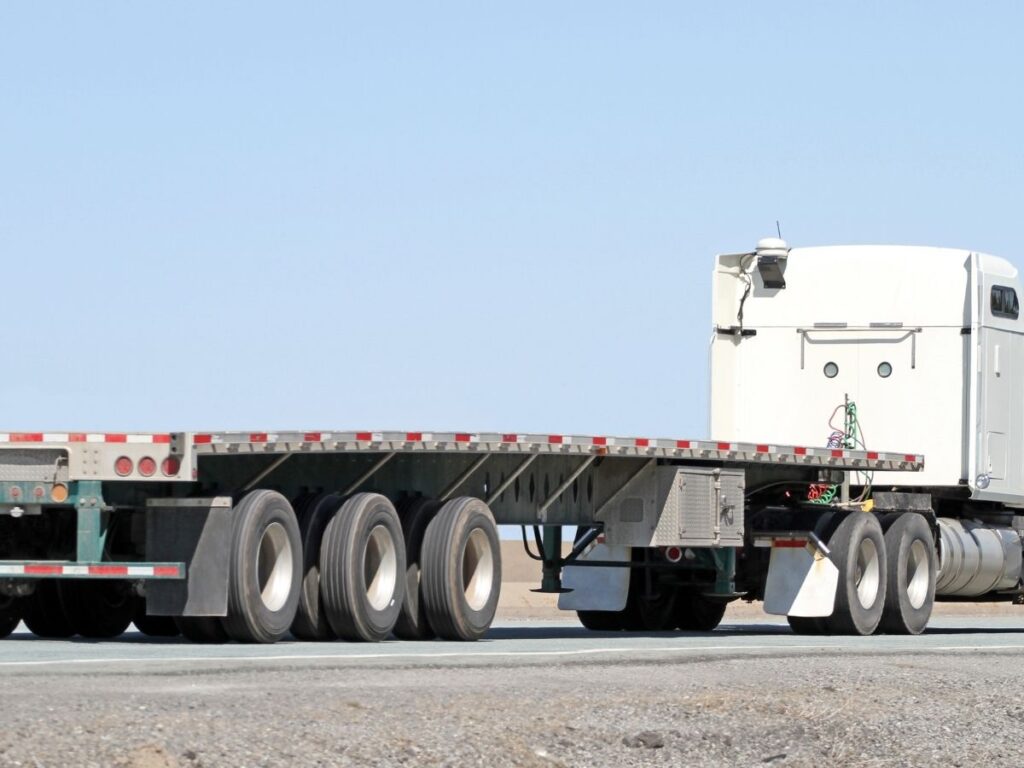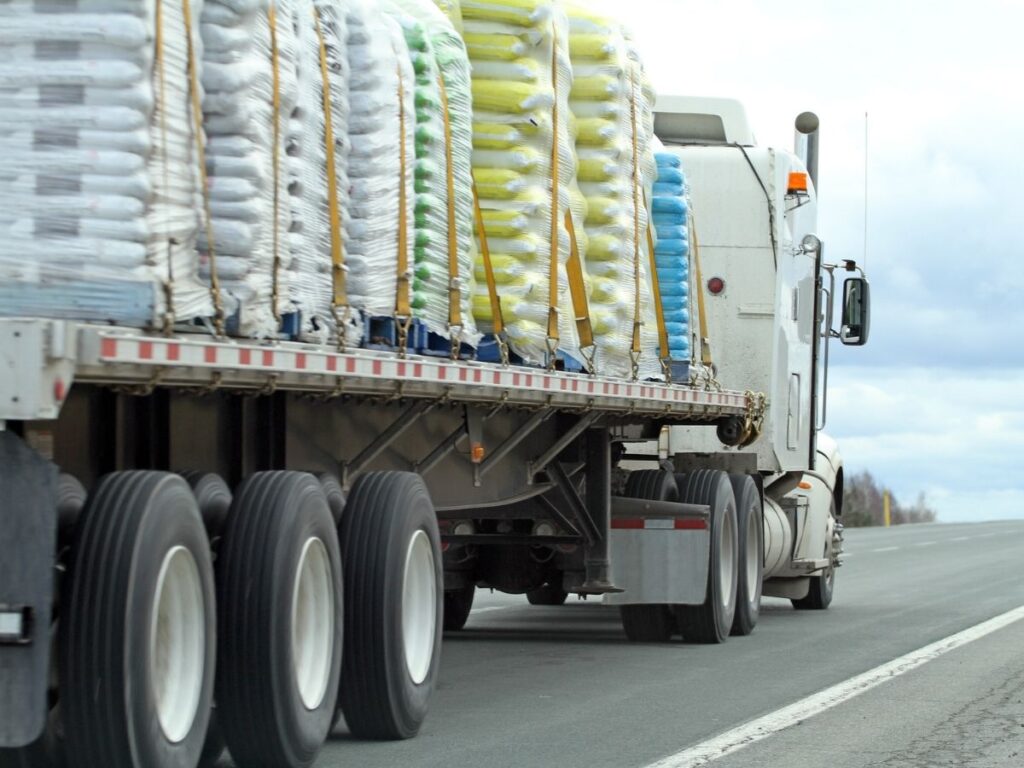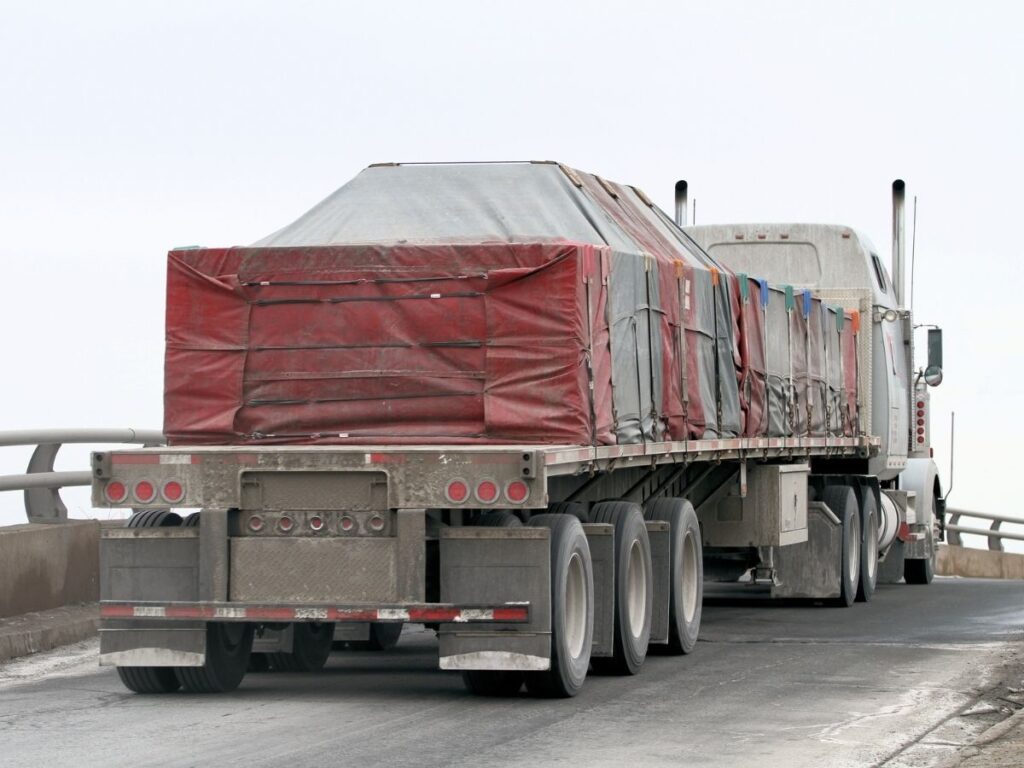I still remember my first big hauling job.
I had the load. I had the route. I thought I had the right equipment.
But I didn’t.
I used a flatbed truck when I should’ve gone with a trailer. The result? Not enough space. Awkward weight distribution. Delays that cost me more than money.
That was the day I realized—knowing the difference between a flatbed truck and a trailer can make or break a job.
Since then, I’ve helped buyers figure out what works best for their hauling needs. I’ve seen what happens when the wrong setup shows up on-site—and how much smoother it goes with the right one.
In this article, you’ll learn the real differences between flatbed trucks and trailers. What they do best. Where they fall short.
By the end, you’ll know exactly which one fits your job.
So let’s get started!
Quick Comparison Table
Before we dive into each option in detail, here’s a quick side-by-side look. This gives you a clear snapshot of how flatbed trucks and trailers compare across key points.
| Feature | Flatbed Truck | Flatbed Trailer |
| Cost | Lower upfront cost | Higher upfront, but better long-term value |
| Load Capacity | Moderate (up to ~10,000–26,000 lbs GVWR) | Higher (up to 48,000 lbs freight; 80,000 lbs GVW) |
| Best For | Short hauls, local deliveries, job sites | Long hauls, cross-border, heavy or oversized loads |
| Maneuverability | Easier to turn and park in tight areas | Needs more space; harder to maneuver in cities |
| Maintenance | Fewer components, easier for short use | Modular; trailer and tractor maintained separately |
| Cargo Type | Tools, pallets, small equipment | Steel, construction panels, long or heavy cargo |
| Loading Access | Simple rear or side access | Side, top, and rear loading flexibility |
| Flexibility | Fixed unit, limited configuration options | Trailer can be swapped or upgraded independently |
| Legal Needs | CDL required (depending on truck class) | CDL and permits often needed for oversized loads |
| Industry Fit | Construction, retail, on-site operations | Logistics, mining, agriculture, large-scale freight |
We’ve covered the basics—now it’s time to dig deeper into the pros, cons, and use cases.
1. What Is a Flatbed Truck?
I remember the first time I used one on a job site. The equipment didn’t fit in my regular box truck, and I was stuck. A coworker showed up with a flatbed truck, loaded it in minutes, and got the job done. That’s when I understood the real value of this setup.
A flatbed truck is a vehicle made for hauling heavy or oversized loads. It has two main parts built into one: the cab (where the driver sits) and the flatbed (the long, open platform in the back). There’s no roof. No sides. Just a strong, flat surface to carry things like lumber, machinery, or building supplies.
How It Works
Using a flatbed truck is pretty straightforward.
Here’s how the process usually goes:
- Load the cargo: You place the load directly onto the flatbed. Since there are no sides or roof, you can load it from the rear, side, or top. This makes it easier to handle long or oddly shaped items.
- Secure everything: Once the cargo is on the bed, it needs to be tied down. Use straps, chains, or binders to keep it from shifting during the drive. If needed, a tarp can be added to protect it from rain or dust.
- Inspect before moving: Before driving off, do a quick check. Make sure the load is stable. Check your tie-downs, tires, and lights.
- Drive to your destination: With everything secure, you’re ready to go. Flatbed trucks are often used for short trips, like local deliveries or moving equipment on-site.
- Unload on arrival: At the destination, you remove the straps and unload the cargo—again, from any direction that works best.
Common Sizes and Configurations
- Light-duty flatbed: 10–14 feet long
- Medium-duty flatbed: 16–20 feet
- Heavy-duty flatbed: 22 feet or more
Each is built for different weight limits and load sizes.
Some trucks have removable beds, but most work trucks come with a fixed flatbed—strong, simple, and always ready.
What Is It Used For?
- Construction sites: moving tools, generators, or small equipment
- Lumber deliveries: transporting long wood beams
- Agricultural supplies: hauling fencing or feed locally
- Factory materials: short runs between local plants or warehouses
If you’re doing local transport or working on-site, a flatbed truck can save you time. No trailer to hook up. No extra steps.

2. What Is a Flatbed Trailer?
You’ve probably seen one roaring down the highway—long, wide, and wide open—carrying stacks of lumber, steel pipes, or massive crates strapped tight under flapping tarps.
That’s a flatbed trailer. It’s a heavy-duty platform with no walls and no roof, built to haul big, bulky loads. But it doesn’t move on its own. It needs a truck to pull it. That makes it flexible. Drop the trailer when the job’s done, hook up a new one, and keep going.
How It Works
Using a flatbed trailer takes a few key steps:
- Connect the trailer to the truck: A semi-truck backs up and locks into the trailer’s fifth-wheel coupling. This holds the trailer steady while allowing it to pivot during turns.
- Inspect brakes and lights: Once attached, the driver checks the brake system, air lines, and electrical lights to make sure everything works together.
- Load the cargo: You can load from the side, rear, or even from the top using cranes or forklifts. The open design makes this easy.
- Secure the load: Use straps, chains, or binders to keep the cargo from shifting. For weather protection, many loads are covered with heavy tarps.
- Hit the road: Once everything is secure and inspected, the driver takes off—often for long distances.
Common Sizes and Types
Flatbed trailers come in different lengths. The most common are:
- 40 feet
- 45 feet
- 48 feet
- 53 feet
Some trailers use 2 axles, while others built for heavier loads may have three or more.
At Rhinotrail, we manufacture trailers in all major lengths and axle setups to support different industries and loading needs.
Different trailer types include:
- Standard flatbed: The most common, simple flat deck
- Extendable flatbed: Can stretch for longer cargo
- Gooseneck trailer: Drops lower at the front for taller items
When to Use a Flatbed Trailer
Flatbed trailers are built for long-distance hauling. They’re great when you need to move:
- Shipping containers
- Steel, pipes, or raw materials
- Heavy equipment across state or country lines
If you’re hauling big cargo over long routes, a flatbed trailer gives you the space and flexibility to get the job done.

3. Industry Applications by Operational Needs
The best choice between a flatbed truck and a flatbed trailer depends on one thing—what you need to do.
It’s not just about size or how far you’re hauling. It’s about the job, the load, and where you’re working.
I’ve seen people pick the biggest setup, thinking more space means more value. But that only works if the truck or trailer fits your work. Otherwise, it just slows you down.
Construction & Mining
- Flatbed trailers are best for hauling heavy machinery over distance. Their length and axle setups handle weight and balance better.
- Flatbed trucks are great for moving tools or equipment around the job site. They’re faster to load and easier to drive in tight spaces.
Logistics & Transportation
- Flatbed trailers give more space for bulk cargo and multi-stop deliveries. You can unhook the trailer without stopping the truck’s workflow.
- Trailer swaps make long-haul shipping more flexible. One tractor can pull different loads without delay.
Agriculture, Oil & Gas
- Flatbed trailers work well for long pipes, fencing, and side-loading tasks. Their open design and length make awkward loads easier to manage.
- Flatbed trucks are better for local deliveries on farms or oil sites. Their turning radius helps on narrow roads and soft ground.
Retail, Manufacturing, and Individual Use
- Flatbed trailers are best for hauling large or mixed-size cargo. They give you more deck space for different types of freight.
- Flatbed trucks are ideal for short-distance, local deliveries. They’re quicker to drive, park, and unload in tighter spots.

4. Maneuverability and Road Handling
Choosing between a flatbed truck and a flatbed trailer isn’t just about what you can carry. It’s also about where you can go.
I’ve been in situations where getting the load to the site was easy—but turning into the site was the real problem. That’s where maneuverability makes all the difference.
Some setups handle tight turns better. Others need more space, time, and driving skills. Let’s look at how each one performs when the roads—or job sites—get tricky.
Flatbed Truck: Built for Tight Spaces
- A flatbed truck has an integrated cab and bed, meaning it turns more like a regular vehicle.
- This gives you a tighter turning radius, which helps in narrow streets, small job sites, or alleys.
- It’s also easier to reverse and park, especially without worrying about trailer swing.
- I once had to deliver it into a narrow alley behind a small warehouse—only a flatbed truck could make that turn safely and quickly.
Flatbed Trailer: Needs More Room
- A flatbed trailer connects to a semi-truck, which increases the total length of the vehicle.
- The longer setup makes turning and reversing more difficult, especially in tight areas.
- It takes more skill, time, and space to maneuver a trailer safely.
- I watched a driver struggle to back a 53-foot trailer into a tight dock. It took several tries and a spotter. A flatbed truck would’ve handled it faster.
Which One Handles Better in Tight Spaces?
- Flatbed trucks are the better choice for urban routes, job sites, and small delivery zones.
- Flatbed trailer works better in open spaces, large yards, and highway runs, but it’s slower in tight spots.
5. Load Capacity and Cargo Versatility
I once saw a load of tile being rejected at a weigh station—too heavy for the flatbed truck it was on. The driver had to call for a trailer and reload everything by hand. It added hours to the job and cost the company more than just fuel.
That’s why it’s important to match your equipment to your load. Let’s look at how trucks and trailers compare when it comes to weight and flexibility.
Flatbed Truck
I delivered a load of stacked fencing panels across town using a flatbed truck. The load was light, but bulky. The truck handled it just fine, and I was able to park close and unload fast. For local deliveries like that, it worked perfectly.
- Flatbed trucks have built-in beds, so part of the weight limit is taken up by the cab and chassis.
- That leaves you with less room for actual cargo.
Flatbed trucks are a good fit for:
- Small machines
- Pallets
- Generators
- Construction supplies for nearby jobs
- Depending on the truck class, you might be working with a gross vehicle weight rating (GVWR) of 10,000 to 26,000 lbs.
- That total includes the truck’s own weight, plus cargo and fuel.
Use a flatbed truck when the load is light and the distance is short. It’s easier to manage and quicker to get in and out of job sites.
Flatbed Trailer
We once hauled long PVC pipes for an irrigation project using a 45-foot flatbed trailer. We loaded everything from the side with a forklift, then strapped it down in under 30 minutes. A flatbed truck couldn’t have handled the pipe length—or the weight.
- Flatbed trailers are built for heavier and longer loads.
- They’re pulled by a semi-truck, with a total U.S. DOT weight limit of 80,000 lbs gross.
That number includes:
- The truck
- The trailer
- The load
On average, you can haul around 48,000 lbs of freight, depending on your axle setup.
Trailers also offer:
- Side loading for longer or bundled cargo
- Crane access from above
- Rear entry for forklift operations
If you’re hauling oversized materials or need more freedom to load in different ways, a flatbed trailer gives you the right setup.

6. Licensing, Permits, and Legal Requirements
The first time I hauled with a flatbed trailer, I didn’t realize I needed an oversize load permit. I was only over by a foot, but it didn’t matter. I got stopped, fined, and delayed. That experience taught me something fast—the right paperwork is just as important as the right truck or trailer.
Whether you’re using a flatbed truck or trailer, there are legal rules you have to follow. Some apply everywhere. Others depend on where you’re driving.
CDL Requirements
- In most countries, a Commercial Driver’s License (CDL) is required for both flatbed trucks and flatbed trailers.
- This applies especially if the Gross Vehicle Weight Rating (GVWR) is over 26,000 lbs, or if you’re pulling a trailer over 10,000 lbs.
If you’re just starting out, don’t skip this step. Driving without the right license can lead to big trouble.
Oversize Load Permits
- Flatbed trailers often carry longer or wider loads.
- In those cases, you’ll likely need an oversize or overweight permit.
This depends on:
- The width (typically anything over 8.5 feet)
- The length (over 53 feet in most U.S. states)
- The total weight, including tractor, trailer, and cargo
Road and Bridge Restrictions
- Some cities have trailer bans during peak hours or in tight zones.
- Certain bridges have weight limits that affect both trucks and trailers.
- You’ll need to plan your route carefully—especially for long hauls.
Common Documents and Permits to Check
Here’s what you might need before hitting the road:
- Commercial Driver’s License (CDL)
- Vehicle registration
- Oversize/overweight load permit
- Insurance papers
- Logbook or ELD (electronic logging device)
- Trip/fuel permits for cross-border hauling
Rules vary by state, province, or country. Always check your local transport laws to stay compliant and avoid delays.
7. Maintenance, Durability & Parts Availability
If you’ve ever broken down mid-job, you know how fast things can go sideways. I’ve been there. A flatbed truck once left me stuck hours from town—and the delay cost more than the repair.
That’s why maintenance matters. It’s not just about saving money. It’s about keeping your work moving.
Flatbed Truck
If you’re using a flatbed truck, you’re working in a single vehicle. The cab, engine, and bed are all connected. That means fewer moving parts between units—but when something breaks, the whole thing is out of action.
You’ll probably find:
- It’s easier to service in towns or near repair shops
- Common parts like lights, tires, and brake pads are widely available
- But if you’re using it for long hauls, the engine will wear out faster
For short-distance jobs or local deliveries, this setup works well. You won’t have to deal with trailer connections, fifth wheels, or extra brake systems.
But keep in mind—when the truck’s down, your load stops moving too.
Flatbed Trailer
Using a trailer gives you more freedom. If your tractor needs service, you can simply hook up another one and keep going.
You’ll like that:
- There’s no engine to maintain on the trailer itself
- You can upgrade or swap the trailer without replacing your whole vehicle
- Maintenance is focused on air lines, brakes, tires, and the deck
Trailers are built to handle a wide range of jobs. That includes checking:
- Brake systems
- Tie-down points
- Frame and flooring
- Lighting and wiring
If you’re working in farming, mining, or energy, this kind of setup gives you reliable performance and flexibility—without overcomplicating service or parts sourcing.
8. How to Choose the Right Setup for Your Business
I’ve seen business owners choose equipment that looked good on paper but didn’t match the way they actually worked. When you choose based on your day-to-day needs, the results speak for themselves. The right setup saves time, supports growth, and keeps your business running strong.
#1 Distance & Frequency
If you’re handling short, daily routes around town or within a job site, a flatbed truck is a practical choice. It moves quickly, turns easily, and helps you stay on schedule for local deliveries. For longer routes, cross-border jobs, or frequent regional hauls, a flatbed trailer stands out with its strength, capacity, and road stability.
#2 Type of Cargo
The type of cargo you haul should guide your choice. Flatbed trailers, like the ones built at Rhinotrail to handle long, heavy, oversized freight, are great for long pipes, wide panels, and larger equipment. Flatbed trucks work better for tools, packaged goods, or smaller site deliveries.
#3 Budget & Long-Term Use
Flatbed trucks are a solid option if you’re working with a smaller upfront budget or focused on local operations. But if you’re planning to scale, swap loads, or take on varied freight, a flatbed trailer gives you more room to grow. It offers long-term value, flexibility, and the ability to adapt as your business changes.
Conclusion
When I got stuck choosing between a flatbed truck and trailer, I didn’t need more specs—I needed clarity. That’s what this guide was made for.
You now know what each setup is, how it works, and when to use it.
Your next move depends on your load, routes, and goals.
So, what’s standing in your way?
Whether you’re hauling short or going cross-country—make the choice that fits your business, not just your budget.
Contact us today to find the setup that’s built for you.


